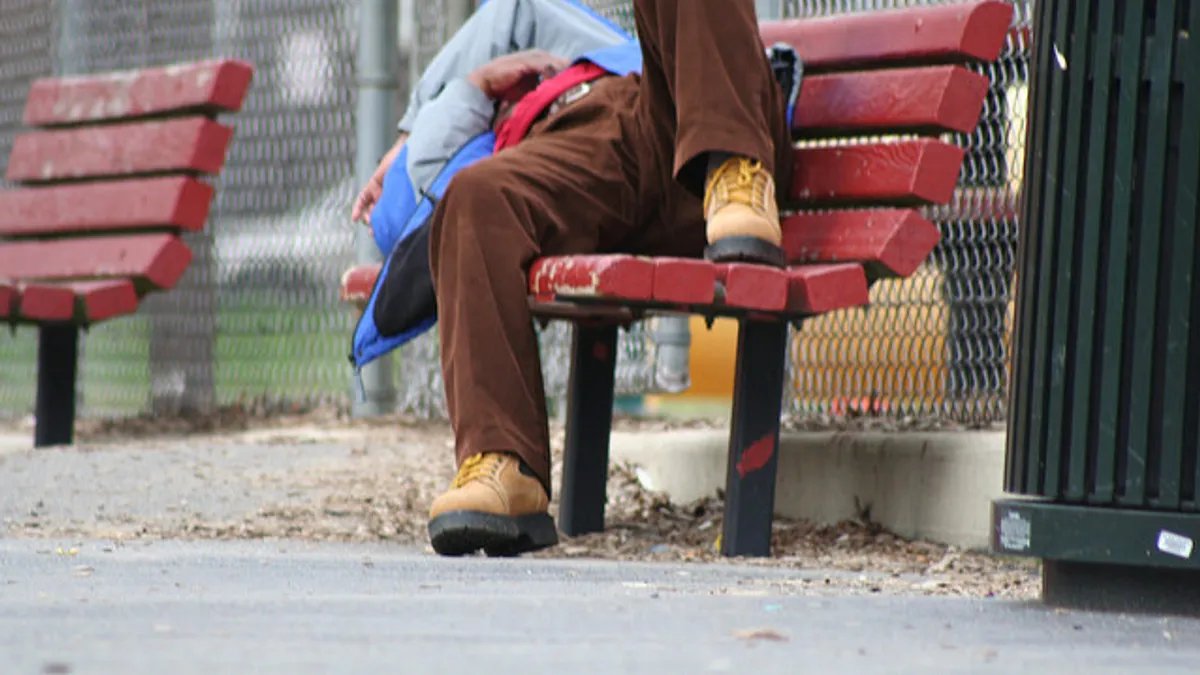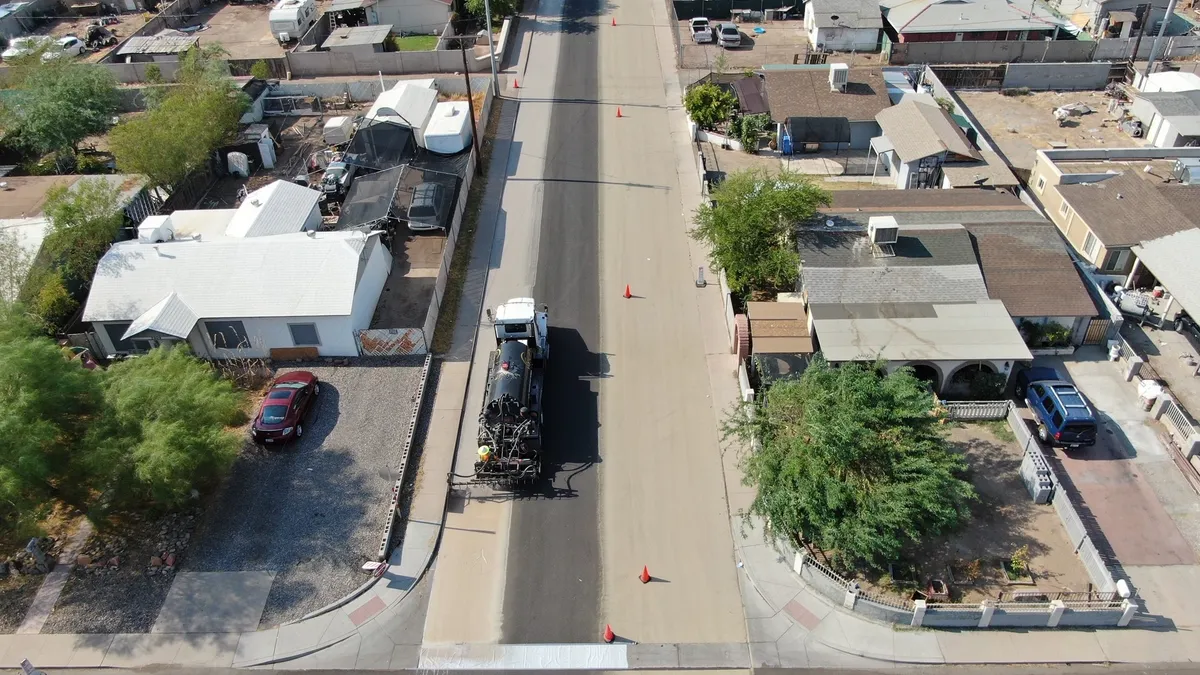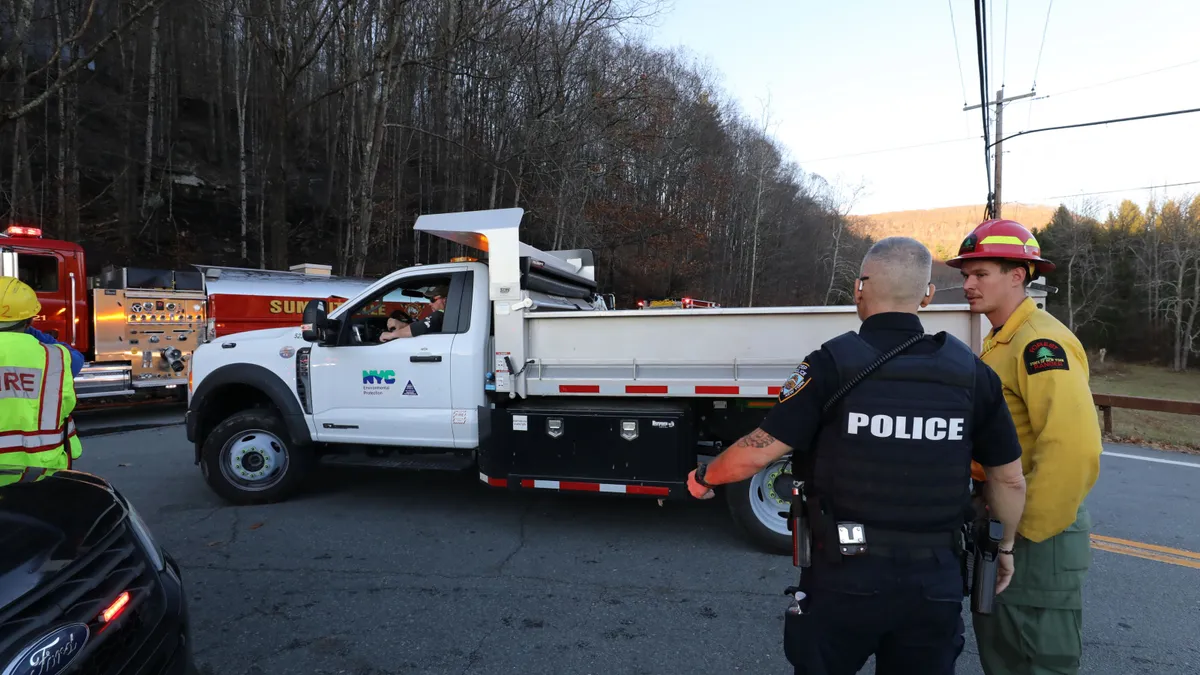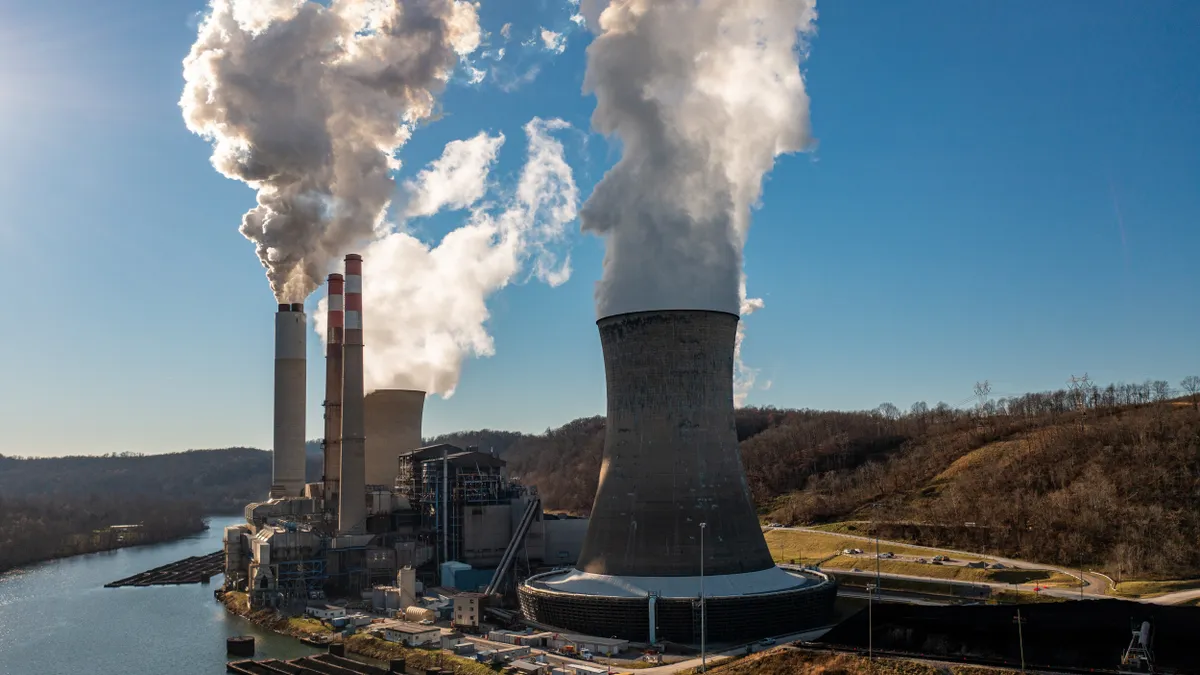Homelessness ticked up slightly across the United States this year, according to an annual report from the U.S. Department of Housing and Urban Development (HUD), compiled each year for Congress.
The number of homeless people during a one point-in-time count in January was 552,830, a 0.3% increase over 2017, prompting HUD to refer to the numbers as "largely unchanged." The uptick follows seven years of declines.
It's worth noting that this year's report includes a correction to last year's numbers. The 2017 report originally put the national homeless number at 553,742, but HUD has now adjusted that down to 550,996. The discrepancy is due to Los Angeles County reducing its originally reported number, and HUD consequently has now reduced the 2017 national total by 2,746 people. Had the 2017 number remained at what HUD originally reported, national homelessness actually would have been slightly down this year.
The number of people living in unsheltered locations — as opposed to emergency shelter or temporary assistive housing — increased for the third year and is the factor to which the slight overall homelessness bump primarily is attributed. Another main factor HUD cites is that nearly 4,000 people stayed in emergency shelters after Hurricanes Harvey, Irma, Maria and Nate, in addition to wildfires in the West and other similar storms and events.
Like last year, a demographic breakdown of the data shows that African Americans are overrepresented in the homeless population and Caucasians are underrepresented compared with their presence in society. About 40% of all people experiencing homelessness are black and about 49% are white, compared with 13% and 72% of the overall U.S. population, respectively. Latinos also were overrepresented in the homeless population, at 22%, compared to 18% of the overall U.S. population.
Five states make up about half of all people experiencing homelessness: California (24%), New York (17%), Florida (6%), Texas (5%) and Washington (4%). When considering just the unsheltered homeless population, nearly half (47%) live in California. The next closest state on the unsheltered metric is Florida (7%).
Those statistics point out the severity of the problem in California and why advocates push especially hard there for additional homelessness mitigation funding and programs. That state also is considered to be ground zero for the housing crisis, or the lack of affordable housing supply. Some analysts correlate this year's increase in homelessness to the worsening housing crisis.
"Communities across the country are getting better and better at making sure that people exit homelessness quickly through Housing First approaches," said Matthew Doherty, executive director of the U.S. Interagency Council on Homelessness, in a statement. "We know, however, that a lack of housing that people can afford is the fundamental obstacle to making further progress in many communities."
Advocates agree with the government that the lack of affordable housing supply is hindering greater progress on homelessness mitigation.
"The solution to homelessness is housing. And when the nation had an adequate supply of affordable housing, we didn’t have a homelessness crisis," said Nan Roman, president and CEO of the National Alliance to End Homelessness, in a statement.
Interestingly, even though California has more homeless individuals than any other state, it was among the top five states that experienced a dip in their homeless population, with a 1.2% decline. Hawaii came in first, with a 9.6% drop. Massachusetts had the largest increase in homelessness, at 14.2%
Even though the overall national numbers edged up, the number of homeless people declined in 31 states and the District of Columbia. In addition, even when taking into account the slight uptick between 2017 and 2018, overall homelessness actually is down 15% from a peak in 2007.
The report pointed out another bright spot: Homelessness declined among families and veterans, two key demographics that leaders and advocates have been targeting with specialized assistance programs. Veteran homelessness dropped 5% over last year and family homelessness dropped 3%.
“It’s very clear that focus creates progress. We see the greatest declines among populations that have received targeted and sustained resources,” Roman said. “Now, we have to pay close attention to the populations where we’re seeing increases."
Advocates continue to call for holistic solutions to the problem instead of just focusing on providing traditional homeless shelters. More municipalities and their partner organizations try to get to the root cause of each individual's inability to hold stable housing and they provide service-based solutions such as counseling and a "housing first" approach, in which people are assisted with quickly moving into and staying in permanent housing in conjunction with short-term assistance.
"We’re not going to end homelessness if we don’t have a clear strategy for homeless individuals," said Roman. "This includes building crisis response systems for individual adults, and developing best practice strategies for outreach, shelter, services and housing for them."



















